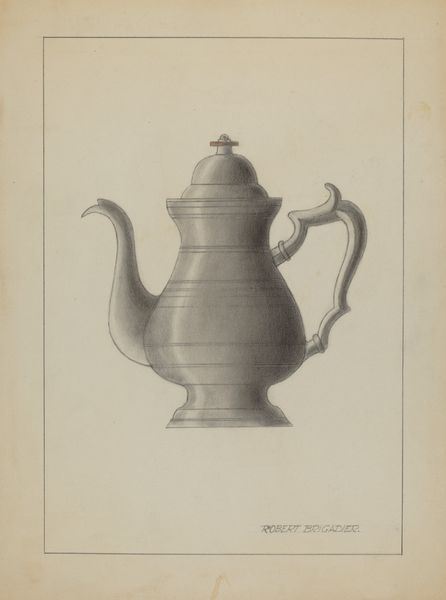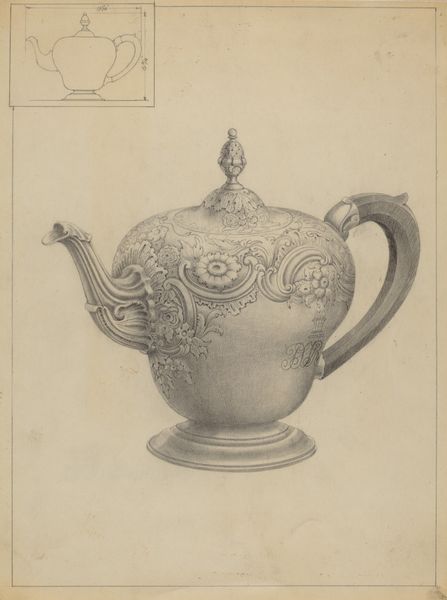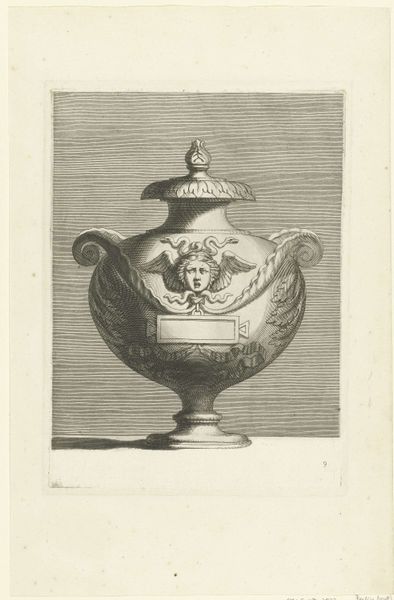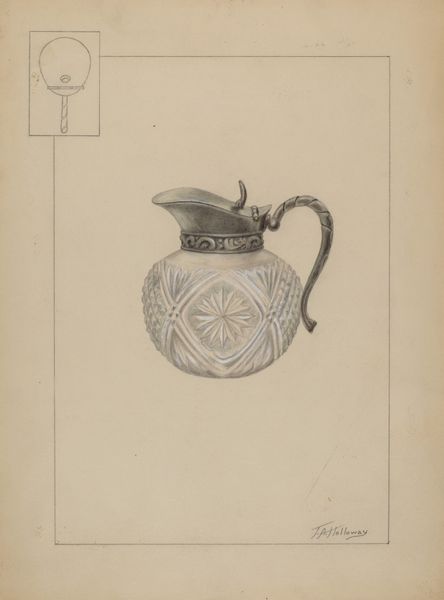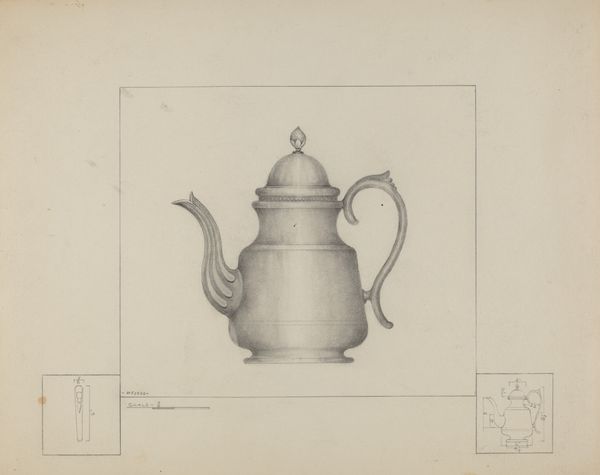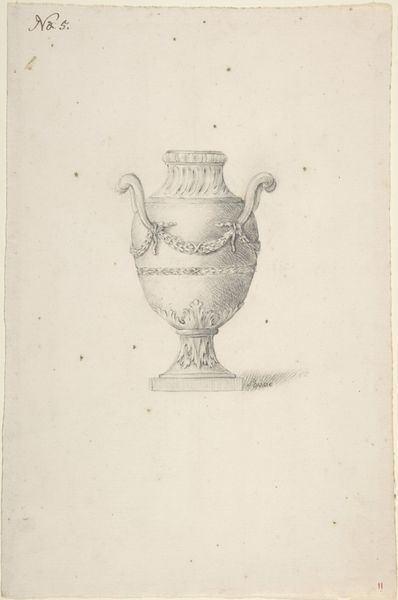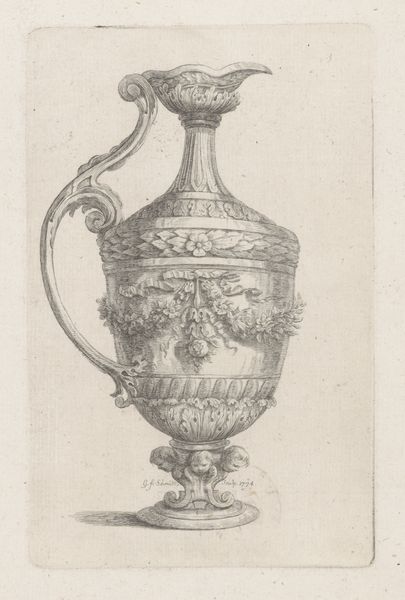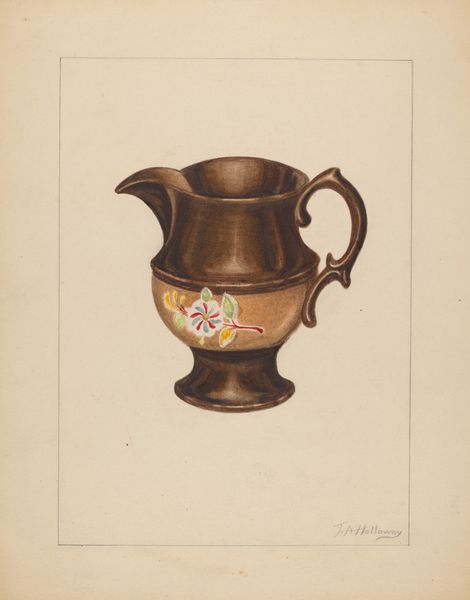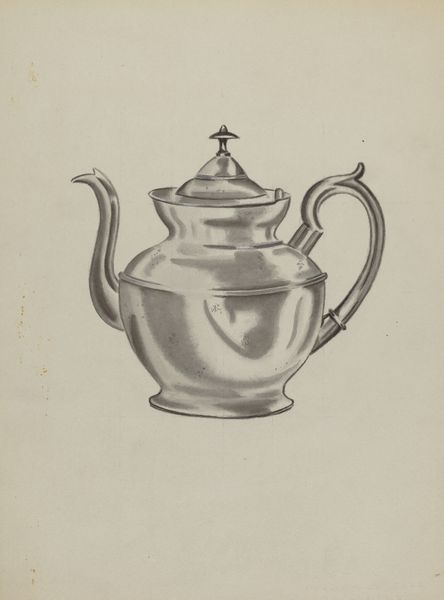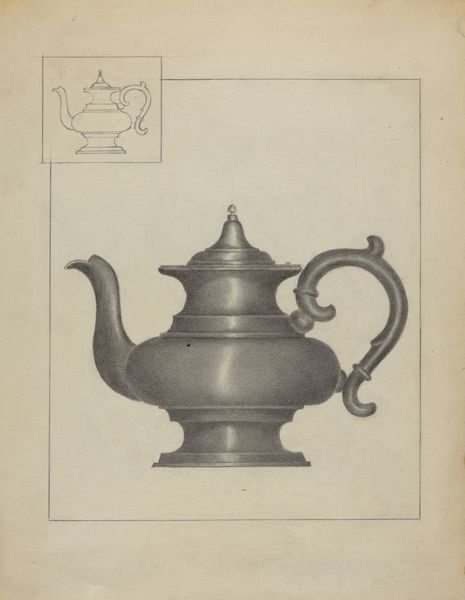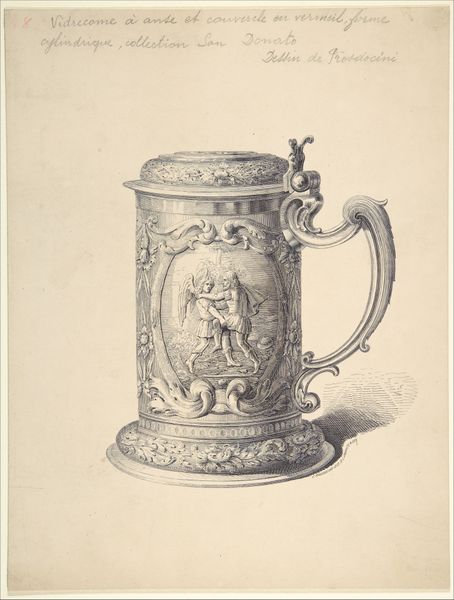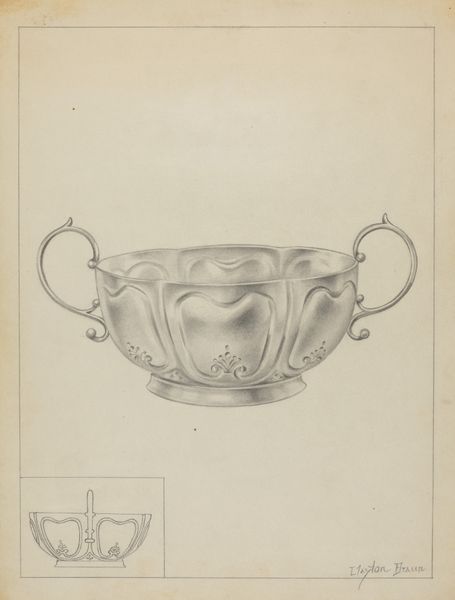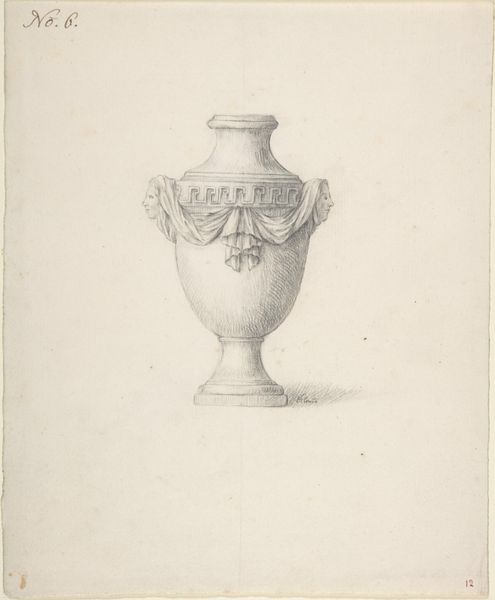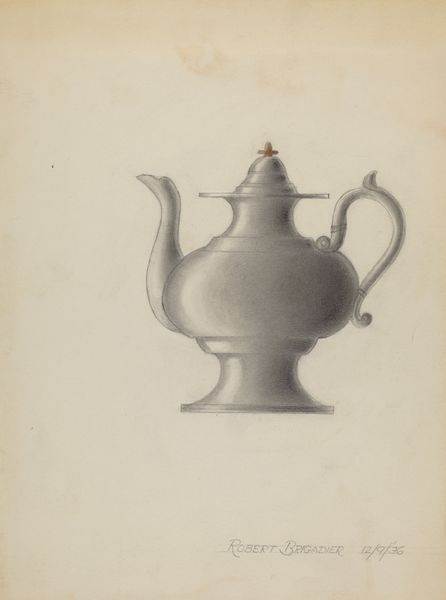
print, metal, engraving
#
pencil drawn
#
light pencil work
#
shading to add clarity
# print
#
metal
#
pencil sketch
#
pencil work
#
decorative-art
#
engraving
Dimensions: height 233 mm, width 174 mm
Copyright: Rijks Museum: Open Domain
This print of a coffee or tea pot was made by Henri-Charles Guérard, though we don’t know precisely when. It’s an etching, which means the image was created by using acid to bite into a metal plate, allowing the artist to create incredibly fine lines. Look closely, and you can see the dazzling level of ornamentation. The intricate details create a highly textured surface, which is so fine that it's hard to believe it was made by hand. The artist clearly wants to give the impression of luxury, maybe even something imported from the East. What’s fascinating is that Guérard made his career by reproducing the work of other artists, essentially acting as a high-end commercial printer. This print gives us a sense of how the industrial revolution changed our relationship to value. Was it better to own a unique handmade object or a perfect reproduction? Guérard’s image leaves that question hanging in the air. It reminds us that the making process and the context of production are critical to the meaning of any artwork.
Comments
No comments
Be the first to comment and join the conversation on the ultimate creative platform.
